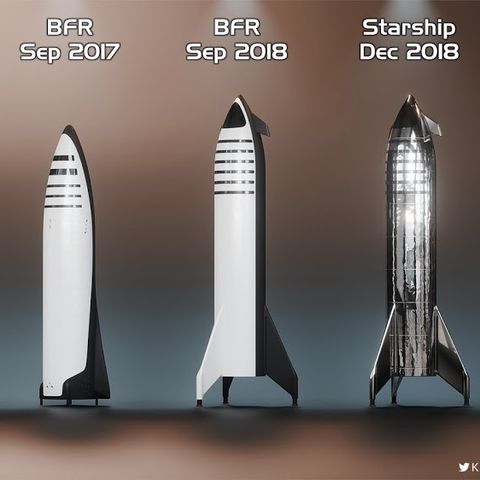UFO Buster Radio News – 426: SpaceX Garbage Company, Planet9, SOFIA Finds Moon Water, and 53 Stars 16 Light years or less!

Descarga y escucha en cualquier lugar
Descarga tus episodios favoritos y disfrútalos, ¡dondequiera que estés! Regístrate o inicia sesión ahora para acceder a la escucha sin conexión.
Capítulos
Descripción
Subscribe to the YouTube Channel here - https://www.youtube.com/channel/UCggl8-aPBDo7wXJQ43TiluA Join the Episode after party on Discord! Link: https://discord.gg/ZzJSrGP SpaceX executive pitches Starship for space debris cleanup Link: https://spaceflightnow.com/2020/10/27/spacex-executive-pitches-starship-for-space-debris-cleanup/ SpaceX could use...
mostra másJoin the Episode after party on Discord!
Link: https://discord.gg/ZzJSrGP
SpaceX executive pitches Starship for space debris cleanup
Link: https://spaceflightnow.com/2020/10/27/spacex-executive-pitches-starship-for-space-debris-cleanup/
SpaceX could use its Starship vehicles to clear out space debris in Earth orbit, alongside the program’s more publicized purpose of ferrying people and cargo to the moon and Mars, a company executive said.
The Starship is the upper stage of a giant new rocket SpaceX is developing to boost more than 100 metric tons, or more than 220,000 pounds, of payloads into low Earth orbit. With in-orbit refueling, the Starship’s methane-fed engines could propel more than 100 metric tons of cargo to the moon, Mars, and other deep space destinations, according to SpaceX.
SpaceX is designing the Starship and its massive booster rocket — named the Super Heavy — to be fully reusable. Both vehicles will come back to Earth for vertical landings to be turned around for more missions.
“Not only will it decrease the costs of access to space, it’s the vehicle that would transport people from Earth to Mars,” Shotwell said in an interview with Time’s technology columnist Patrick Lucas Austin. “But it also has the capability of taking cargo and crew at the same time, and so it’s quite possible that we could leverage Starship to go to some of these dead rocket bodies — other people’s rocket’s, of course — basically pick up some of this junk in outer space.”
In the hunt for Planet Nine, astronomers eye a new search technique for the elusive world
Link: https://www.space.com/planet-nine-search-observing-technique
Finding Planet Nine may require looking at telescope images in a different light.
Astronomers are vetting a "shifting and stacking" technique that could aid the hunt for the putative world, which some researchers think lurks undiscovered in the far outer system, way beyond Pluto's orbit.
The strategy involves shifting space-telescope images along sets of possible orbital paths, then stacking the photos together to combine their light. The technique has already been used to discover some moons in our solar system, and it could potentially spot Planet Nine — also known as Planet X, Giant Planet Five or Planet Next — and other extremely farflung objects, researchers said.
Astronomers are vetting a "shifting and stacking" technique that could aid the hunt for the putative world, which some researchers think lurks undiscovered in the far outer system, way beyond Pluto's orbit.
The strategy involves shifting space-telescope images along sets of possible orbital paths, then stacking the photos together to combine their light. The technique has already been used to discover some moons in our solar system, and it could potentially spot Planet Nine — also known as Planet X, Giant Planet Five or Planet Next — and other extremely farflung objects, researchers said.
"You really can’t see them without using this kind of method," Malena Rice, an astronomy Ph.D. student at Yale University in Connecticut, said in a statement. "If Planet Nine is out there, it’s going to be incredibly dim."
In a test, the researchers found the faint signals of three known trans-Neptunian objects (TNOs) — small bodies that circle the sun beyond Neptune's orbit — in shifted and stacked TESS images. The scientists then conducted a blind search of two distant patches of sky, turning up 17 new TNO candidates.
"If even one of these candidate objects is real, it would help us to understand the dynamics of the outer solar system and the likely properties of Planet Nine," Rice said. "It’s compelling new information."
NASA’s SOFIA Discovers Water on Sunlit Surface of Moon
Link: https://www.nasa.gov/press-release/nasa-s-sofia-discovers-water-on-sunlit-surface-of-moon/
NASA’s Stratospheric Observatory for Infrared Astronomy (SOFIA) has confirmed, for the first time, water on the sunlit surface of the Moon. This discovery indicates that water may be distributed across the lunar surface, and not limited to cold, shadowed places.
“We had indications that H2O – the familiar water we know – might be present on the sunlit side of the Moon,” said Paul Hertz, director of the Astrophysics Division in the Science Mission Directorate at NASA Headquarters in Washington. “Now we know it is there. This discovery challenges our understanding of the lunar surface and raises intriguing questions about resources relevant for deep space exploration.”
“Prior to the SOFIA observations, we knew there was some kind of hydration,” said Casey Honniball, the lead author who published the results from her graduate thesis work at the University of Hawaii at Mānoa in Honolulu. “But we didn’t know how much, if any, was actually water molecules – like we drink every day – or something more like drain cleaner.”
“Without a thick atmosphere, water on the sunlit lunar surface should just be lost to space,” said Honniball, who is now a postdoctoral fellow at NASA’s Goddard Space Flight Center in Greenbelt, Maryland. “Yet somehow we’re seeing it. Something is generating the water, and something must be trapping it there.”
SOFIA’s follow-up flights will look for water in additional sunlit locations and during different lunar phases to learn more about how the water is produced, stored, and moved across the Moon. The data will add to the work of future Moon missions, such as NASA’s Volatiles Investigating Polar Exploration Rover (VIPER), to create the first water resource maps of the Moon for future human space exploration.
The Stratospheric Observatory for Infrared Astronomy (SOFIA) is an 80/20 joint project of NASA and the German Aerospace Center (DLR)[1] to construct and maintain an airborne observatory.
SOFIA is based on a Boeing 747SP wide-body aircraft that has been modified to include a large door in the aft fuselage that can be opened in flight to allow a 2.5 m (8.2 ft) diameter reflecting telescope access to the sky
The Nearest Stars to Earth (Infographic)
Link: https://www.space.com/18964-the-nearest-stars-to-earth-infographic.html
The nearest stars to Earth are in the Alpha Centauri triple-star system, about 4.37 light-years away. One of these stars, Proxima Centauri, is slightly closer, at 4.24 light-years.
Of all the stars closer than 15 light-years, only two are spectral type G, similar to our sun: Alpha Centauri A and Tau Ceti. The majority are M-type red dwarf stars.
Only nine of the stars in this area are bright enough to be seen by the naked human eye from Earth. These brightest stars include Alpha Centauri A and B, Sirius A, Epsilon Eridani, Procyon, 61 Cygni A and B, Epsilon Indi A and Tau Ceti.
Sirius A is the brightest star in Earth’s night sky, due to its intrinsic brightness and its proximity to us. Sirius B, a white dwarf star, is smaller than Earth but has a mass 98 percent that of our sun.
In late 2012, astronomers discovered that Tau Ceti may host five planets including one within the star’s habitable zone. Tau Ceti is the nearest single G-type star like our sun (although the Alpha Centauri triple-star system also hosts a G-type star and is much closer).
The masses of Tau Ceti’s planets range from between two and six times the mass of Earth.
53 Stars 16 Light years or less!
Show Stuff
Join the episode after party on Discord!
Link: https://discord.gg/ZzJSrGP
The Dark Horde Podcast: https://www.spreaker.com/show/the-dark-horde
The Dark Horde, LLC – http://www.thedarkhorde.com
Twitter @DarkHorde or https://twitter.com/HordeDark
Support the podcast and shop @ http://shopthedarkhorde.com
UBR Truth Seekers Facebook
Group: https://www.facebook.com/groups/216706068856746
UFO Buster Radio: https://www.facebook.com/UFOBusterRadio
YouTube Channel: https://www.youtube.com/channel/UCggl8-aPBDo7wXJQ43TiluA
To contact Manny: manny@ufobusterradio.com, or on Twitter @ufobusterradio
Call the show anytime at (972) 290-1329 and leave us a message with your point of view, UFO sighting, and ghostly experiences or join the discussion on www.ufobusterradio.com
Mail can be sent to:
UFO Buster Radio Network
PO BOX 769905
San Antonio TX 78245
For Skype Users: bosscrawler
Comentarios

THE FUCK YOU NETWORK
hace 4 años

Andre Ortiz
hace 4 años

Greenman
hace 4 años

Andre Ortiz
hace 4 años

Greenman
hace 4 años

Greenman
hace 4 años

Greenman
hace 4 años

Andre Ortiz
hace 4 años

The Dark Horde Network
hace 4 años

Greenman
hace 4 años

Greenman
hace 4 años

Andre Ortiz
hace 4 años

Greenman
hace 4 años

Andre Ortiz
hace 4 años

Andre Ortiz
hace 4 años

Andre Ortiz
hace 4 años

Andre Ortiz
hace 4 años

THE FUCK YOU NETWORK
hace 4 años

Greenman
hace 4 años

Andre Ortiz
hace 4 años

Andre Ortiz
hace 4 años

Greenman
hace 4 años

Greenman
hace 4 años

GameVet02
hace 4 años

Andre Ortiz
hace 4 años
Información
| Autor | The Dark Horde Network |
| Organización | The Dark Horde Network |
| Página web | - |
| Etiquetas |
Copyright 2024 - Spreaker Inc. an iHeartMedia Company
